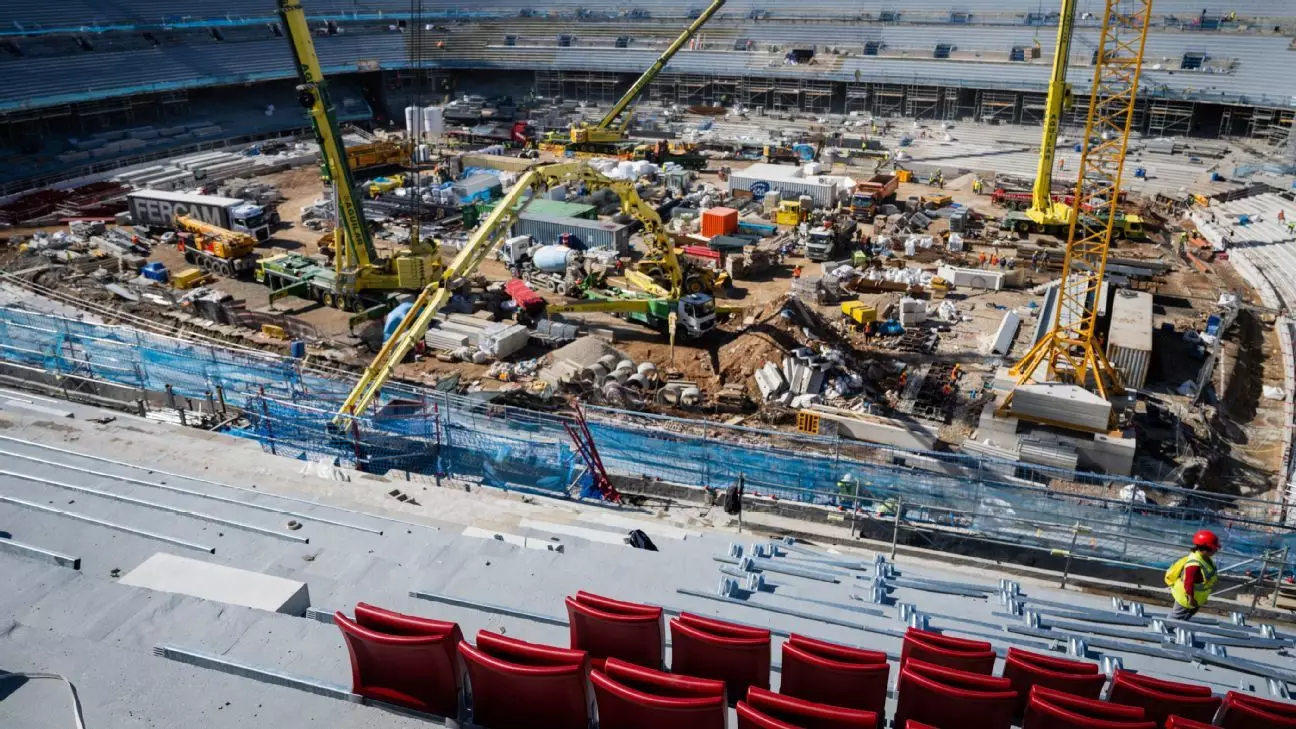FC Barcelona fans have become accustomed to the vibrant atmosphere of the iconic Spotify Camp Nou, but unexpected delays in renovations will mean that their beloved team will remain at the Olympic Stadium for the foreseeable future. Originally expected to return by November 2023, the club has now confirmed that they will not be back on their home turf until at least May 2024, following a series of setbacks that have plagued the renovation process since it began last summer. This prolonged absence not only disrupts the routine of fans but also impacts the club’s identity and connection to its storied venue.
Operational Challenges and UEFA Regulations
The challenges facing Barcelona are particularly pronounced during a critical period in their schedule. As they navigate through LaLiga and Champions League matches, the Olympic Stadium, while a temporary solution, cannot replicate the historical significance and home-field advantage that Camp Nou provides. UEFA’s strict regulations further complicate matters, as teams are barred from shifting between venues during the knockout phases of European competitions. This means that Barcelona will have to establish their rhythm in a less familiar environment, which could influence their performances on the international stage.
Barcelona’s management initially anticipated that renovation work would be minimal and on schedule, with hopes of celebrating their 125th anniversary at Camp Nou. However, as the project unfolded, unforeseen complications arose, particularly with the second tier of the stadium, which required more extensive modifications than initially thought. The club’s management must now face the repercussions of these miscalculations, leading to speculation about the efficacy of their planning processes. Enhanced project management and foresight in future renovations may be essential to preventing similar issues.
Despite the current obstacles, there is a light at the end of the tunnel for Barcelona fans. The renovation is expected to result in a stunning upgrade of Camp Nou, with plans for increased capacity and state-of-the-art facilities that will elevate the game-day experience. By the time the revamp is complete in the summer of 2026, the stadium’s capacity is set to increase to approximately 105,000, making it the largest in Europe. The upcoming months may challenge both the team and its supporters, but the promise of a modernized Camp Nou provides hope for the future, fostering aspirations for renewed success both on and off the field.
Ultimately, the unwavering loyalty of the fans during this period is commendable. Barcelona’s supporters have consistently shown their dedication, attending matches at the Olympic Stadium and continuing to back their team despite the challenges. While the temporary displacement from Camp Nou has been a difficult pill to swallow, it also presents an opportunity for the club to strengthen its bond with the fans and foster an environment of unity and resilience. As the season unfolds, the hope remains that when they finally return home, it will be a moment of celebration that resonates deeply with the club’s rich heritage.

